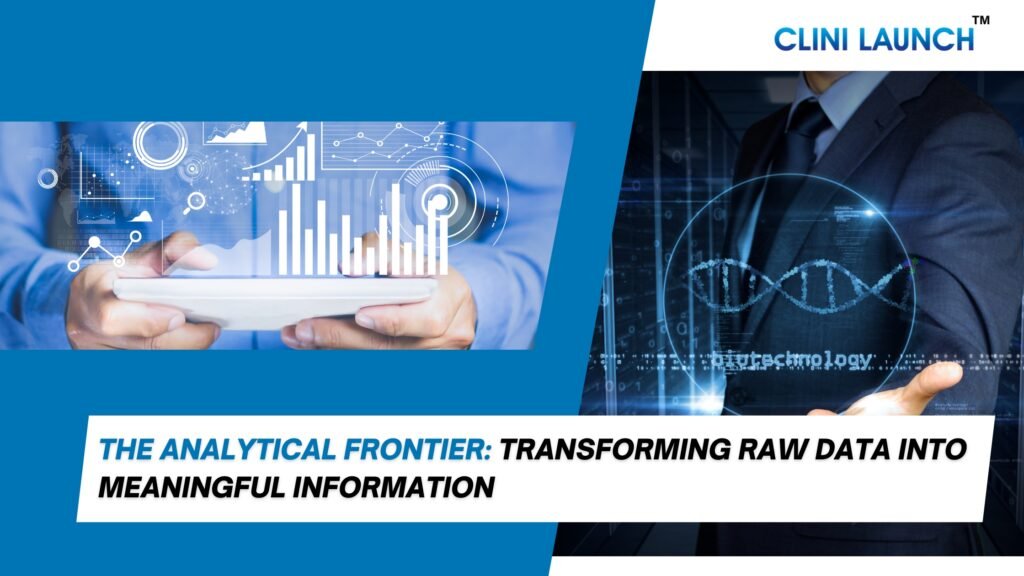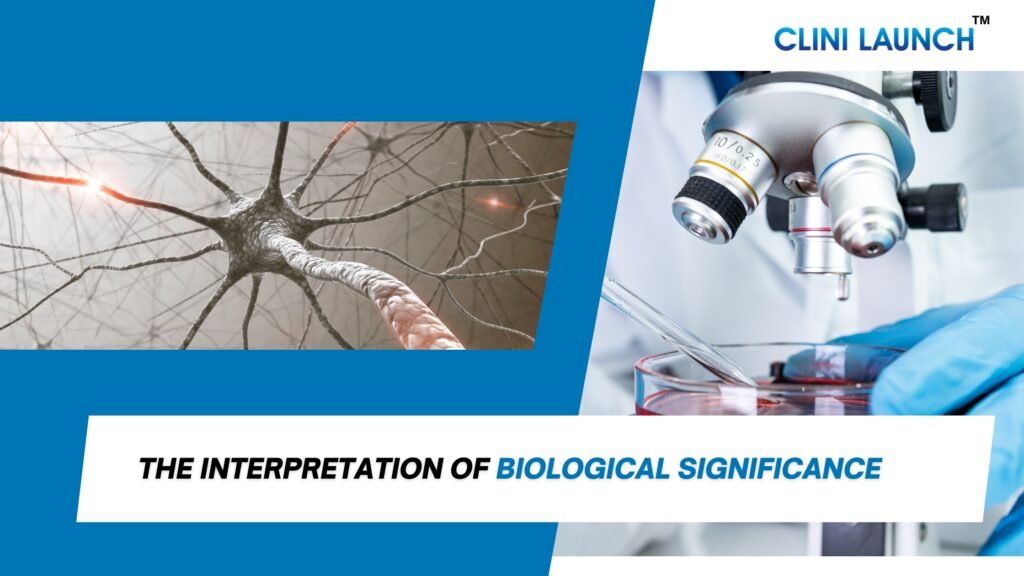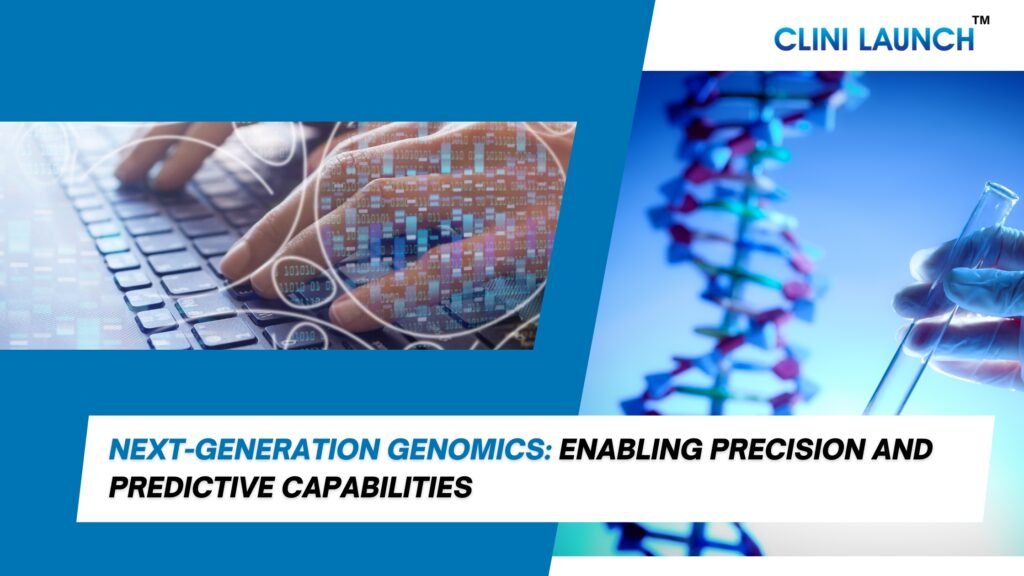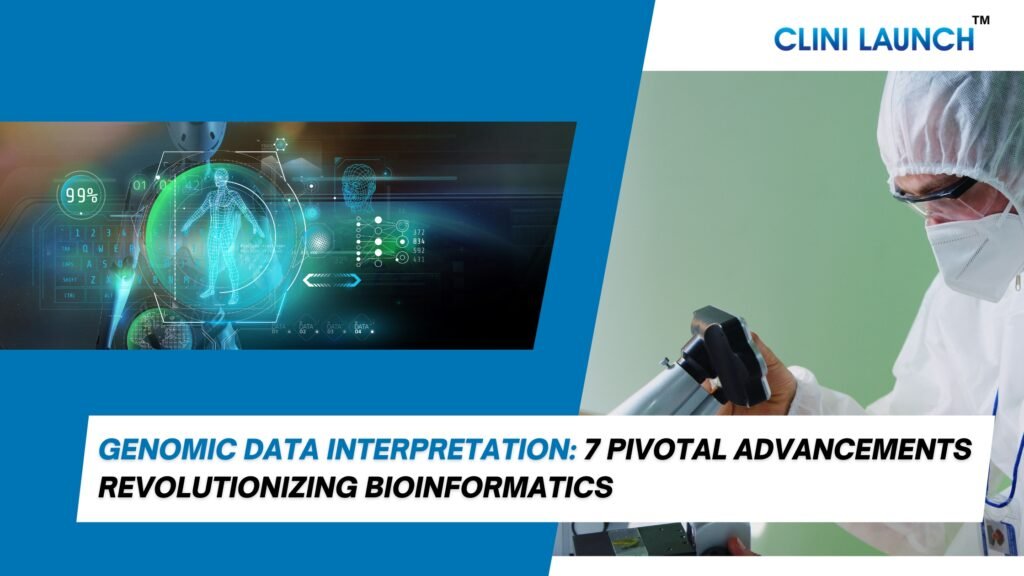The dawn of the genomic era has ushered in an unmatched ability to peer into the very essence of life – our DNA. With the cost of genome sequencing plummeting, individuals and researchers alike are accumulating vast quantities of genetic raw data. However, possessing this information is merely the first step. The true power lies in genomic data interpretation – transforming a complex string of nucleotides into meaningful, actionable insights that can revolutionize healthcare, personalized medicine, and our understanding of human biology.
This comprehensive guide will delve into the intricacies of interpreting DNA test results, exploring the methodologies, challenges, and groundbreaking advancements that shape the future of genomic science. We will illuminate how to interpret raw DNA data and navigate the exciting landscape of genetic data interpretation.
Enroll Now: Bioinformatics Course
The Genesis of Genomic Data: From Biological Sample to Digital Sequence
Before we can even begin to discuss interpretation, it’s crucial to understand how genomic data is generated. The journey typically begins with a biological sample – be it blood, saliva, or tissue.
1. DNA Extraction and Quantification: The first critical step involves isolating the DNA from the collected biological material. This process removes cellular debris and other contaminants, ensuring a pure DNA sample. Subsequently, the quantity and quality of the extracted DNA are assessed, as these factors directly impact the success of subsequent sequencing.
2. Library Preparation: Isolated DNA is then fragmented into smaller, manageable pieces. Adapters, short synthetic DNA sequences, are tied to these fragments. These adapters serve as crucial anchors for binding to the sequencing platform and for identifying individual DNA fragments during the sequencing process. This “library” of prepared DNA fragments is now ready for sequencing.
3. High-Throughput Sequencing Technologies: The past two decades have witnessed a revolution in sequencing technologies.
- Sanger Sequencing: While foundational and still used for targeted sequencing, Sanger sequencing is a low-throughput method.
- Next-Generation Sequencing (NGS) / Massively Parallel Sequencing: This encompasses a range of technologies (e.g., Illumina, PacBio, Oxford Nanopore) that allow for the simultaneous sequencing of millions to billions of DNA fragments. These platforms generate vast amounts of short “reads” – sequences of nucleotides corresponding to fragmented DNA. Key advantages of NGS include its high throughput, affordability, and ability to detect rare variants.
- Third-Generation Sequencing: Technologies like PacBio and Oxford Nanopore offer longer reads, which are particularly beneficial for resolving complex genomic regions, structural variants, and highly repetitive sequences.
The output of these sequencing platforms is typically in the form of FASTQ files, which contain both the nucleotide sequences and their associated quality scores, indicating confidence in each base call. This genetic raw data is the raw material for all subsequent interpretative endeavors.
The Analytical Frontier: Transforming Raw Data into Meaningful Information

Once the raw genomic data is generated, the real work of genomic data interpretation begins. This involves a multi-step bioinformatics pipeline designed to transform raw reads into interpretable genetic variations.
1. Quality Control and Pre-processing: The initial FASTQ files often contain errors or low-quality reads that can skew downstream analyses. Quality control steps involve:
- Trimming Adapters: Removing the adapter sequences that were added during library preparation.
- Filtering Low-Quality Reads: Discarding reads with low quality scores, which could lead to inaccurate variant calls.
- Removing Duplicates: Identifying and removing PCR duplicates, which can artificially inflate read counts and lead to biased variant calling.
2. Alignment and Read Mapping: The cleaned sequencing reads are then aligned to a reference genome. The human reference genome (e.g., GRCh38) serves as a template, allowing researchers to determine the precise chromosomal location of each read. This process, often performed using algorithms like BWA or Bowtie, identifies where each short read “maps” to the longer reference sequence. The output of this step is typically a BAM file, which contains the aligned reads and their mapping information.
3. Variant Calling: This is a crucial step in interpreting DNA test results. Variant callers (e.g., GATK, FreeBayes, Samtools) analyze aligned reads to identify differences (variants) compared to the reference genome. These variants can include:
- Single Nucleotide Polymorphisms (SNPs): A change in a single nucleotide at a specific position.
- Insertions and Deletions (Indels): The addition or removal of one or more nucleotides.
- Structural Variants (SVs): Larger-scale genomic rearrangements, such as copy number variations (CNVs), inversions, and translocations.
The output of variant calling is typically a VCF (Variant Call Format) file, which lists all identified variants along with their genomic coordinates, reference and alternate alleles, and various quality metrics.
4. Variant Annotation: A VCF file, while informative, still requires further processing to understand the potential impact of each variant. Annotation tools (e.g., ANNOVAR, SnpEff, VEP) add functional and clinical information to each variant by querying various databases. This includes:
- Genomic Location: Whether the variant is in a gene, intergenic region, or regulatory element.
- Effect on Gene/Protein: If in a gene, whether it’s synonymous, missense, nonsense, or frameshift.
- Allele Frequencies: How common the variant is in different populations (e.g., gnomAD, 1000 Genomes Project).
- Clinical Significance: Whether the variant has been associated with diseases or traits in clinical databases (e.g., ClinVar, OMIM).
This extensive annotation process transforms raw variant calls into a more interpretable dataset, laying the groundwork for in-depth genetic data interpretation.
The Interpretation of Biological Significance

Once the raw data has been processed and annotated, the true challenge of genomic data interpretation begins. This involves leveraging a combination of computational tools, biological knowledge, and statistical approaches to extract meaningful biological and clinical insights.
1. Prioritization of Variants:
Given the sheer number of variants often identified in a genome (millions of SNPs), it’s imperative to prioritize those most likely to be functionally significant or clinically relevant. This can involve:
- Filtering Frequency: Removing common benign variants found in population databases.
- Filtering by Predicted Impact: Focusing on variants predicted to have a high impact on protein function (e.g., nonsense, frameshift, splice site variants).
- Filtering by Clinical Databases: Prioritizing variants previously reported in clinical databases with a known association to disease.
- Inheritance Patterns: Considering the mode of inheritance for suspected genetic conditions (e.g., autosomal dominant, recessive, X-linked).
2. Gene-Panel Analysis and Whole Exome/Genome Interpretation:
- Gene Panels: For specific suspected conditions, targeted gene panels sequence only a subset of genes known to be associated with a particular disease. This simplifies interpretation by focusing on a limited number of genes.
- Whole Exome Sequencing (WES): Sequences all protein-coding regions of the genome (exons), which constitute about 1-2% of the total genome but contain ~85% of disease-causing mutations. WES offers a broader view than gene panels while being more cost-effective than whole genome sequencing.
- Whole Genome Sequencing (WGS): Sequences the entire genome, including both coding and non-coding regions. WGS provides the most comprehensive view, enabling the detection of structural variants and variants in regulatory regions, which are often missed by the WES. Interpreting raw DNA data from WGS requires advanced computational resources and sophisticated algorithms.
3. Functional Annotation and Pathway Analysis:
Beyond individual variants, understanding the broader biological context is crucial.
- Gene Ontology (GO) and Pathway Analysis: These analyses identify over-represented biological processes, molecular functions, or cellular components among a set of genes or variants. For example, if many identified variants are genes involved in a specific metabolic pathway, it could suggest a dysregulation of that pathway.
- Protein-Protein Interaction Networks: Mapping genes with identified variants onto protein interaction networks can reveal how these genes might be functionally linked and contribute to disease mechanisms.
4. Clinical Interpretation and Reporting:
The ultimate goal of genomic data interpretation in a clinical setting is to provide actionable insights for patient care. This involves:
- ACMG Guidelines: The American College of Medical Genetics and Genomics (ACMG) provides standardized guidelines for classifying the pathogenicity of genetic variants (e.g., pathogenic, likely pathogenic, variant of uncertain significance (VUS), likely benign, benign). This provides a framework for consistent interpretation.
- Phenotype-Driven Interpretation: Integrating patient phenotype (clinical presentation) with genomic findings is critical. A variant that might be benign in a healthy individual could be pathogenic in a patient presenting with specific symptoms.
- Multi-Disciplinary Team Review: Often, clinical genomic interpretation involves a team of experts, including geneticists, genetic counselors, bioinformaticians, and relevant clinicians, to ensure accurate and comprehensive reporting.
Challenges and Opportunities in Genomic Data Interpretation
While significant progress has been made, several challenges persist in genomic data interpretation:
1. The “Variant of Uncertain Significance” (VUS) Conundrum: A major challenge is the identification of VUS, where there is insufficient evidence to classify a variant as clearly benign or pathogenic. This often necessitates further research, family studies, or functional assays to resolve their clinical significance. Interpreting DNA test results with numerous VUS can be perplexing for both clinicians and patients.
2. Complex Disease Genetics: Many common diseases (e.g., heart disease, diabetes, cancer) are complex, meaning they are influenced by multiple genes and environmental factors. Identifying individual genetic contributions to these diseases can be challenging and requires sophisticated polygenic risk score models.
3. Data Standardization and Interoperability: The lack of universal standards for data formats, annotation, and reporting can hinder data sharing and collaborative research. Efforts like GA4GH (Global Alliance for Genomics and Health) are working towards addressing these issues.
4. Ethical, Legal, and Social Implications (ELSI): The rapid advancements in genomics raise important ELSI concerns, including data privacy, genetic discrimination, informed consent, and the responsible use of genomic information.
Despite these challenges, the opportunities presented by genomic data interpretation are immense:
- Personalized Medicine: Tailoring medical treatments and preventative strategies based on an individual’s unique genetic makeup.
- Pharmacogenomics: Predicting an individual’s response to drugs based on their genetic variations, optimizing drug dosage and minimizing adverse effects.
- Rare Disease Diagnosis: Accelerating the diagnosis of rare genetic disorders, often ending diagnostic odysseys for affected individuals and families.
- Cancer Genomics: Identifying somatic mutations in tumors to guide targeted therapies and monitor treatment response.
- Preventative Healthcare: Identifying individuals at increased risk for certain diseases and implementing early screening or lifestyle interventions.
- Population Genomics and Public Health: Understanding disease prevalence, population substructure, and disease outbreaks at a genomic level.
Software Ecosystem for Advanced Genomic Data Interpretation
The complexity of interpreting raw DNA data necessitates a robust software ecosystem. Here are some categories of essential tools and platforms:
1. Alignment and Variant Calling Tools:
- BWA (Burrows-Wheeler Aligner): A widely used tool for aligning sequencing reads to a reference genome.
- GATK (Genome Analysis Toolkit): Developed by the Broad Institute, GATK is a comprehensive suite of tools for variant discovery and genotyping, offering robust algorithms for SNP and indel calling.
- FreeBayes: A Bayesian genetic variant detector designed to find small polymorphisms, especially those in challenging regions.
- Samtools/BCFtools: Essential utilities for manipulating sequence alignment data (BAM files) and variant call format files (VCF files).
2. Variant Annotation and Prioritization Tools:
- ANNOVAR: A versatile tool for annotating genetic variants, providing information on their genomic location, functional consequences, and conservation.
- SnpEff/SnpEff database: Predicts the effects of genetic variants on genes and proteins.
- VEP (Variant Effect Predictor): From Ensembl, VEP predicts the effects of variants on genes, transcripts, and proteins, integrating with a wide range of public databases.
- ClinVar: A public archive of human genetic variation and its relationship to health, crucial for clinical interpretation.
- gnomAD (Genome Aggregation Database): Provides allele frequencies of genetic variants from large-scale sequencing projects, essential for filtering common benign variants.
3. Data Visualization and Exploration Platforms:
- IGV (Integrative Genomics Viewer): A desktop application for interactive exploration of large genomic datasets, allowing visualization of aligned reads, variant calls, and annotations.
- UCSC Genome Browser: A web-based genome browser providing a rich interface for visualizing genomic data and accessing a vast array of annotations.
- Ensembl Genome Browser: Like UCSC, Ensembl offers extensive genomic data, including gene models, regulatory features, and variant information.
4. Cloud-Based Platforms and Pipelines:
- AWS Genomics (Amazon Web Services): Provides scalable cloud infrastructure and services for genomic data storage, processing, and analysis. Its offerings include robust computing resources, storage solutions (S3), and specialized services for genomics workflows.
- Google Cloud Life Sciences: Offers a similar suite of tools for genomics, including pipelines for common bioinformatics tasks and large-scale data management.
- DNAnexus/Seven Bridges Genomics: Commercial cloud-based platforms that provide comprehensive solutions for genomic data analysis, collaboration, and secure data management, often with pre-built pipelines for various applications.
These platforms are instrumental in managing the immense computational demands of genetic raw data interpretation and providing a collaborative environment for researchers and clinicians.
Next-Generation Genomics: Enabling Precision and Predictive Capabilities

The field of genomic data interpretation is evolving at an exhilarating pace. Future directions include:
- Integration of Multi-Omics Data: Combining genomic data with other ‘omics’ data types, such as transcriptomics (gene expression), proteomics (protein levels), and metabolomics (metabolite profiles), to provide a more holistic understanding of biological systems and disease mechanisms.
- Artificial Intelligence and Machine Learning: AI and machine learning algorithms are increasingly being employed to identify complex patterns in genomic data, predict variant pathogenicity, and discover novel disease associations. Deep learning models are showing promise in deciphering non-coding variants and their regulatory roles.
- Long-Read Sequencing Advancements: Continued improvements in long-read sequencing technologies will enable more accurate detection of structural variants and the phasing of alleles, providing a more complete picture of an individual’s genome.
- Population-Specific Reference Genomes: Developing reference genomes that are more representative of diverse populations will improve the accuracy of variant calling and interpretation across different ethnic groups, addressing current biases.
- Democratization of Genomic Data Interpretation: User-friendly interfaces and automated interpretation pipelines will make genomic insights more accessible to a broader range of healthcare professionals and even individuals, empowering them with personalized health information.
Final Thoughts
The journey from a biological sample to actionable insights is complex, yet profoundly impactful. Genomic data interpretation stands as the hub in this process, transforming the vast, intricate language of DNA into a narrative of health, predisposition, and potential. From interpreting DNA test results for rare disease diagnosis to guiding personalized cancer therapies, the ability to interpret raw DNA data is revolutionizing medicine.
As the volume and complexity of genomic data continues to expand, the demand for sophisticated bioinformatics solutions and expert interpretation will only intensify. This is where organizations like CliniLaunch excel.
Are you navigating the complexities of genomic data? CliniLaunch offers cutting-edge bioinformatics services and expert consultations to help you unlock the full potential of your genetic insights. From comprehensive genomic analysis to tailored interpretation strategies, our team at CliniLaunch Research is dedicated to accelerating your research and clinical discoveries.
References
What Is Genomics Data Analysis: Meaning and Software
What Is Genomics Data Analysis: Meaning and Software | BGO Software
What is Genomic Data?





